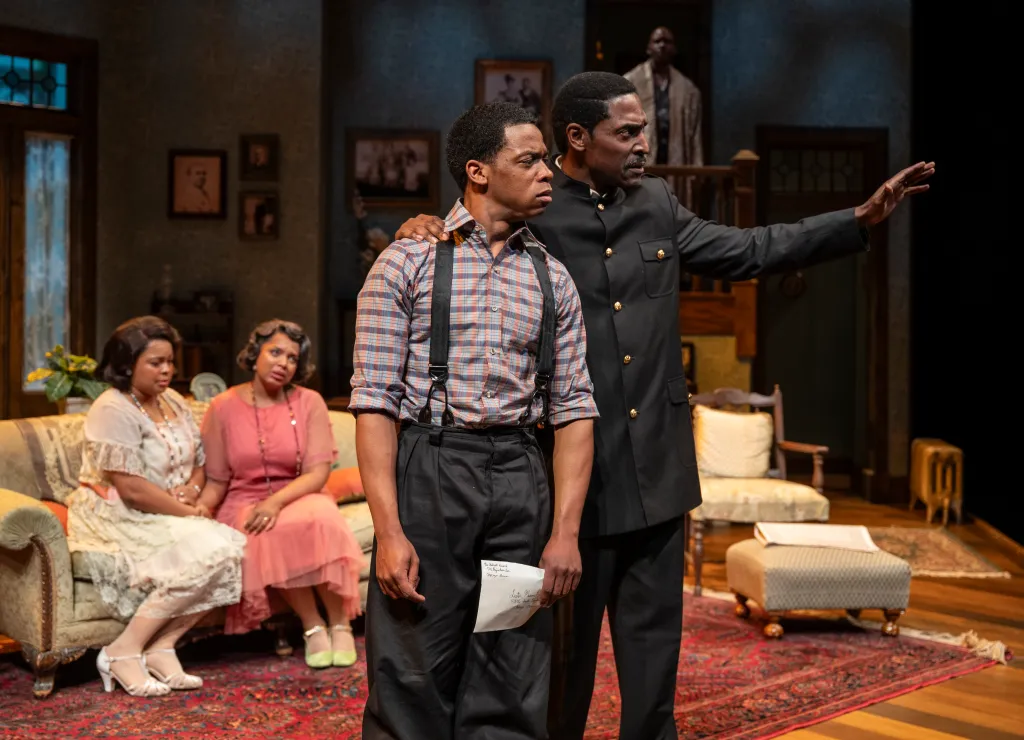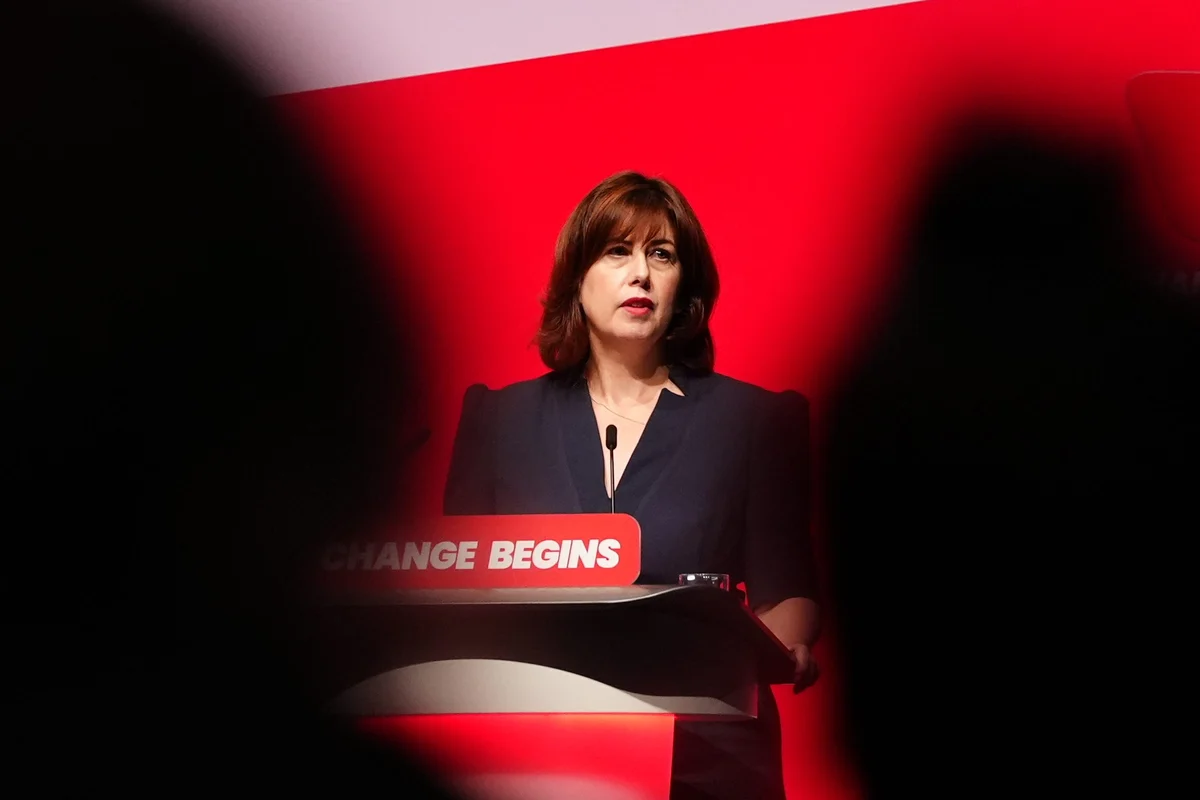
Asked to list the most important Chicago playwrights, few of today’s Chicagoans would mention Theodore Ward, a name they perhaps have not heard at all. A trip to Hyde Park for the remarkable South Side family drama “Big White Fog” at Court Theatre, though, would likely correct that oversight.
Director Ron OJ Parson’s staging, which employs some 17 actors, sure opened my mind to this play, which I had never seen and read only in college when studying the WPA’s Federal Theater Project, of which this play was part.
Ward had a fascinating life. Born in Louisiana, he was both a shoeshine and a bellboy before finding his way (via a scholarship to the University of Wisconsin) to Chicago and its South Side Writers Club. His was a very different background than that of Lorraine Hansberry, a fellow South Sider, although Ward’s 1938 play shares much with her 1959 masterpiece “A Raisin in the Sun”: a Black Chicago family that wants internal peace, upward mobility toward the middle class and economic security, only to be thwarted by both racism and (in the case of “Big White Fog”) their patriarch’s optimistic attachment to the Pan-Africanist ideas of Marcus Garvey. Of course, Hansberry also explored a return to Africa in “Raisin” through the character of Beneatha, who she once told Studs Terkel represented half of herself.
Not staged professionally in Chicago (to the best of my knowledge) since its premiere 1938 production at the long-razed Great Northern Theatre (a Daniel Burnham building demolished to make way for the Dirksen Federal Building), “Big White Fog” follows the extended Mason family, including the elder generation that moved up from the South to Dearborn Street during the Great Migration with freedom and opportunity as its goals.
The setting remains the same throughout the two acts but the years sweep over an entire decade as the inter-generational family struggles through the 1920s. You could say that “Big White Fog” is a drama of disappointment or, more optimistically, of a dream deferred to future generations. The family’s elder stateswoman, Martha Brooks (the unstinting Greta Oglesby in a Parson production stocked with superb actors), has had enough upheavals and has been chagrined to find that Chicago does not provide the peace for which she longs.
As in “Raisin,” much of the play deals with struggles between the old and young as Victor Mason (Joshua L. Green) and Ella (Bridget Adams-King at the performance I saw on the opening weekend) try to keep their kids in control as they navigate college dreams and go carousing on 47th Street. The main conflict is between Victor’s idealistic interest in Pan-Africanism, Black education and social equity, even as his brother-in-law Daniel (Amir Abdullah) argues vociferously for Blacks making money in the capitalist white man’s way (he partitions South Side apartments). Unlike in “Raisin,” where Walter Lee gets ripped off, that entrepreneurship is highly successful (at first) — but, the play asks, at what cost? The other potent dramatic incident comes when Victor finds out his son Lester (the moving Patrick Newson Jr.) has been denied entry to college due to his race. Such is Victor’s frustration, he goes financially all-in on Garvey.
Things come to a head for the family as the Depression kicks in (the original audience would have still have been living it) and bailiffs arrive at the house even as the feds go after Garvey, a double whammy for Victor, who has been trained as a scientific farmer but could not buy land in the South. Meanwhile, you can see the socialist ideas of Hallie Flanagan’s Federal Theatre Project flowering at the end of the play as Lester forges a friendship with a Jewish classmate (played by Artem Kreimer) and Ward posits a coalition of the oppressed as the only way to make change.
Does “Big White Fog” reach the poetic heights of “A Raisin in the Sun”? No, but then, almost no other American play does. It’s still a beautiful piece of writing, very much of Sweet Home Chicago, as it feels here. Parson, who is deft when it comes to epic shows like this, keeps the sprawling action moving and the dynamics intense. Green is phenomenally good as a man whose choices are born of desperation, and the scenes between him and Kreimer sizzle with passion and import.
The play’s title, “Big White Fog” refers not only to the racism that created a disorienting smog but also, I think, to the way that fog impacted how early 20th century Black Chicagoans felt about each other. That was very prescient thinking for the early 1930s and many followed Ward’s template. This play, I believe, has just now passed into the public domain. There already has been a production at Howard University and one can only hope there will be more.
Review: ‘A Raisin in the Sun’ gets an extraordinary, close-to-home production at Court Theatre
What a compelling project and what vibrant life here is given to a mostly lost Chicago play! Ward insisted on this play premiering not on the South Side but downtown in the Loop. He wanted the widest, most interracial audience possible. The play, and this new production in Hyde Park, deserve the same.
Some 20 years later, “A Raisin in the Sun” would play prior to New York at Chicago’s Blackstone Theatre, around the corner from the Great Northern. Ward certainly started something.
Chris Jones is a Tribune critic.
cjones5@chicagotribune.com
Review: “Big White Fog” (4 stars)
When: Through Oct. 12
Where: Court Theatre, 5535 S. Ellis Ave.
Running time: 2 hours, 30 minutes



